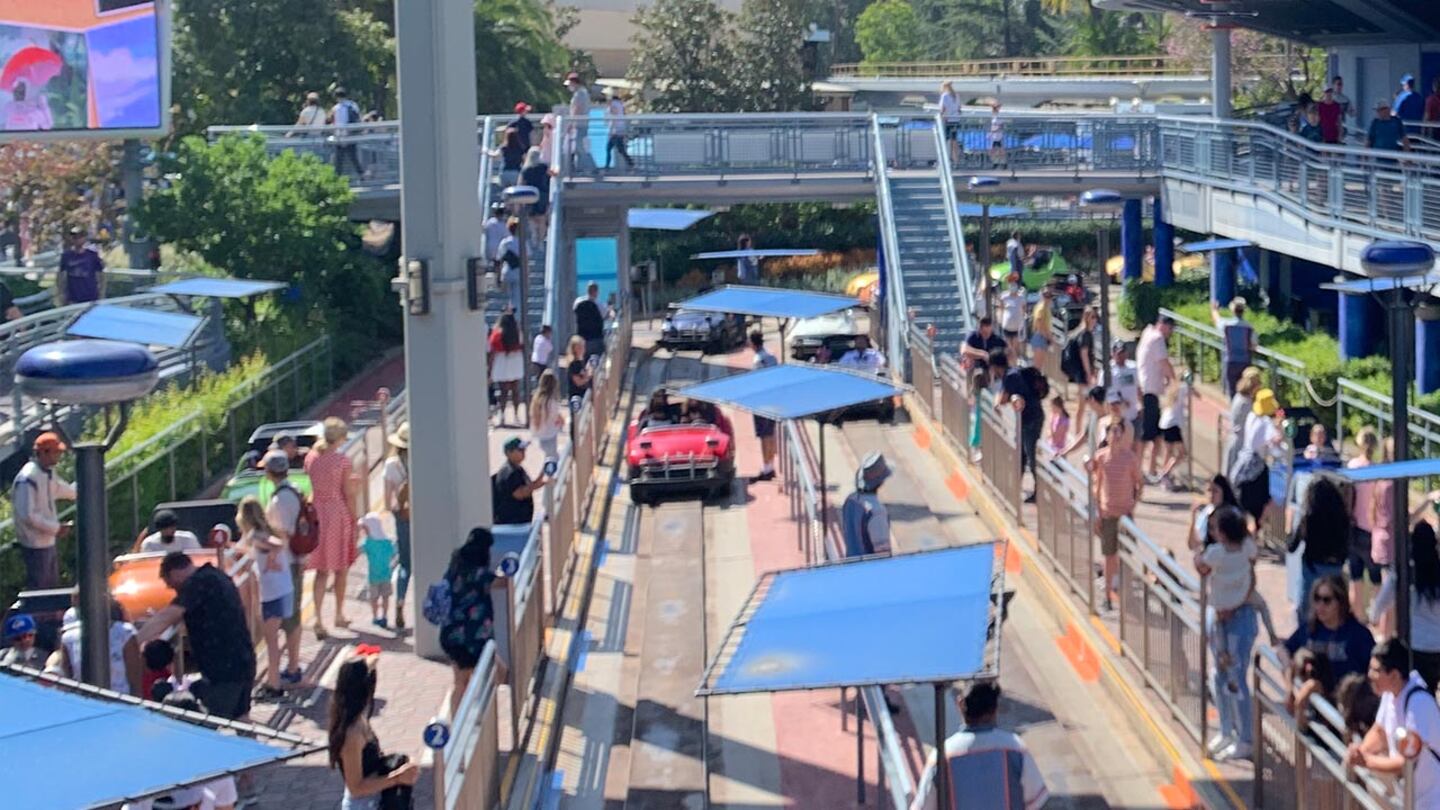The style of Disneyland’s classic Autopia cars has changed over the years, but what hasn’t is the engine that powers the miniature automobiles.
Gas has fueled the kid-size cars since the ride’s inception in 1955. It was one of the rides operating on Disneyland’s opening day on July 17, 1955. It was the only ride in Tomorrowland in operation when the park opened.
The Imagineer who developed the ride, working directly with Walt Disney more than half a century ago, spoke to The Los Angeles Times recently about one of the things he would like to change on the iconic ride.
“Get rid of those God-awful gasoline fumes,” Bob Gurr told the newspaper.
The Times recently found out that the company was thinking of getting rid of the gasoline-powered engines.
“Since opening with Disneyland park in 1955, Autopia has remained a guest-favorite most popular with young kids experiencing driving for the first time,” Disneyland Resort spokesperson Jessica Good wrote to the newspaper via email. “As the industry moves toward alternative fuel sources, we have developed a roadmap to electrify this attraction and are evaluating technology that will enable us to convert from gas engines in the next few years.”
She made the same comment to Deadline, confirming the Time’s exclusive article
Good did not say what technology will drive the cars along the rails of the Autopia to either media outlet. It currently features in-ride branding from Honda, including the company’s “Humanoid Robot and Bird” sharing experiences as riders drive by. Honda will soon introduce an electric SUV to U.S. consumers called the Prologue
In 2016, after the ride’s last refurbishment and retheming, Motortrend reported that the cars ran on a Honda iGX270 motor “typically used in generators, air compressors, pressure washers and wood chippers.” Even then, the car magazine said, “Carrying over the same gas-powered ride vehicles seems like a missed opportunity to bring the attraction into the 21st century, but Honda says this is only phase one of a multiyear agreement.”
Honda, for its part, said that an “all-electric drivetrain was considered” at the time and that it is a possibility in the future, as the sponsorship was a 10-year deal.
The fumes have been the focus of climate change activists who have filed complaints about the ride with agencies that regulate air quality, citing concerns about health problems for Disney employees, called castmembers, who work at the ride, as well as the guests waiting in line.
Because Disneyland is private property, the South Coast Air Quality Management District told the Times that the ride cannot be considered a “public nuisance in the same way that we evaluate emissions impacting local children at schools or nearby residents in their homes” because park goers are not forced to stay near the ride.
Employees are covered by a different government agency that reviews safety issues and investigates conditions that could impact workers.
But Disneyland officials have said they want to have net zero emissions by 2030, only six years away, Deadline reported.
The resort is already making strides to exceed the California Air Resources Board’s zero-emission vehicle milestone set for this year. So far, it has changed 14% of the company’s vehicle fleet to zero emissions, surpassing the 10% level set by CARB.
Gurr told the Times that Tomorrowland, the portion of the park that includes Autopia, should have a focus on renewable energy, public transit and sustainability.
“This has to be done with positive urging, rather than attacking and criticizing,” 92-year-old Gurr said.
Tomorrowland, according to the Times’ climate columnist, could be the model.
Disney, when cutting the ribbon on his theme park nearly 70 years ago, said the land was “a vista into a world of wondrous ideas” and “a step into the future, with predictions of constructive things to come.”
© 2024 Cox Media Group






